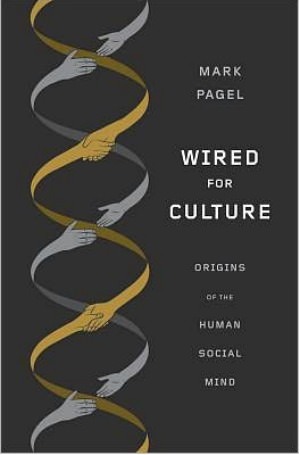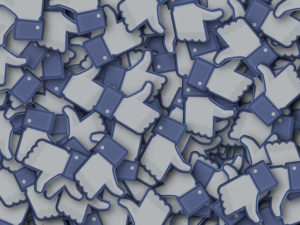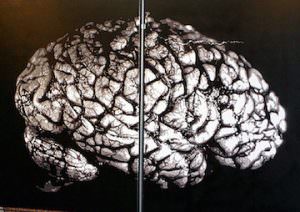Culture or Neurons?
What accounts for our species' self-consciousness and awareness of our mortality, for our impulses to create art, to cling to our memories of childhood, to believe in a deity? Two new books suggest distinct approaches to such elemental questions.What accounts for our species' self-consciousness and awareness of our mortality, for our impulses to create art, to cling to our memories of childhood, to believe in a deity?
“Wired for Culture: Origins of the Human Social Mind” A book by Mark Pagel
“Connectome: How the Brain’s Wiring Makes Us Who We Are” A book by Sebastian Seung
What makes human beings unique? What accounts for our species’ planetary dominance, for our self-consciousness and awareness of our mortality, for our impulses to create art, to help others, to cling to our memories of childhood, to believe in a deity, to seek riches or fame?
Two new books view modern humans through very different lenses and suggest distinct approaches to such elemental questions. In “Wired for Culture,” British evolutionary biologist Mark Pagel contends that we owe both our diverse talents as individuals and our success as a species to our ability to form cultures — tight social groups that have accelerated our acquisition of knowledge, skills and technology. In “Connectome,” neuroscientist Sebastian Seung argues that the software defining each of us as a unique person is coded in the myriad connections among the brain’s 100 billion nerve cells, and that until we can map and study each of those connections in a human brain, we will not begin to fully understand ourselves.
The culture we live in and the inconceivably complex neural network inside our skulls are both essential to our identities. These books are speculative, drawing on current knowledge about the brain, evolution, genetics and social behavior to expound researchers’ current theories about such conundrums as why humans have engaged in genocide, whether we possess free will, why we go through life with the sense of a consistent self, and whether the software for that self might someday be uploaded onto a server, allowing a person’s consciousness to “live” on after the body dies. In many cases, the evidence for the theories being presented is still indirect, scant or nonexistent. For example, Seung predicts that proving how the connections among our nerve cells store memories will require the use of technologies that haven’t even been invented yet, while some of the theories about human social behavior described by Pagel may never be provable. Nonetheless, both of these books challenge our assumptions about what makes us who we are, and offer provocative new insights.
About 45,000 years ago, members of our species, Homo sapiens, reached Europe after earlier migrations out of Africa via the Middle East. The newcomers’ arrival must have come as a shock to the Neanderthals, a separate human species who had inhabited Europe for some 300,000 years. As Pagel notes, the new arrivals “would have carried a baffling and frightening array of technologies” — not only new kinds of weapons and tools, but also perhaps sewn clothes, musical instruments and carved figures. “It would have been like a scene from a science fiction story of a people confronted by a superior alien race.” The aliens likely didn’t owe their advantages to dramatically superior genes, but to a development, some 40,000 years prior to their arrival in Europe. Something happened that had immensely speeded up their ability to learn, adapt and acquire new strategies for taking over the planet: Homo sapiens had acquired culture.
Wired for Culture: Origins of the Human Social Mind
By Mark Pagel
W. W. Norton & Company, 416 pages
Connectome: How the Brain’s Wiring Makes Us Who We Are
By Sebastian Seung
Houghton Mifflin Harcourt, 384 pages
Although today’s humans may harbor mixed feelings about our species’ recent track record in settling Earth’s land masses, wiping out numerous other life forms, turning forests into farmland and achieving exponential population growth, our success viewed in biological terms has been spectacular. And our remarkable longevity and reproductive success stem from our ability — absent in other animals — to form close-knit tribal groups made up of unrelated individuals who speak a common language and can acquire new knowledge through social learning. The innate capacity to acquire culture unites us: Any newborn infant, born or adopted into any culture on the planet, will absorb the language, beliefs, values and norms of that society. Yet our distinct cultures so powerfully influence our behavior that it can be argued that each culture makes use of its members as a strategy for propagating itself, rather than vice-versa.
As Pagel writes, our cultures are “responsible for our art, music, and religion, our unmatched acts of charity … our sense of justice, fairness, altruism, and even self-sacrifice;” but also for our self-interest, our ethnic and racial prejudices, our distrust of strangers, our wars — even for our willingness, at times, to kill our children or ourselves for a religious, ethnic or national cause. Moreover, he writes, there’s no evidence that our cultures’ hold on us is weakening. Despite living in increasingly dense, interconnected populations, we continue to speak as many as 7,000 separate languages and to cling tenaciously to loyalties and customs that differentiate us from our neighbors. Just think about teenage gangs, football and soccer rivalries, antipathies between Democrats and Republicans, or the deep-seated distrust among the nations belonging to the European Union.
|
To see long excerpts from “Wired for Culture” at Google Books, click here. |
|
To see long excerpts from “Connectome” at Google Books, click here. |
Pagel contends that the existence of mutual altruism and cooperation among the unrelated members of human societies is our species’ signal achievement, and his explanation of how such behaviors may have developed is the intellectual heart of his book. These chapters are heavy going at times, relying on science’s understanding of how altruism is thought to have evolved in nonhuman species such as social amoebas (single-celled organisms that stick themselves together to build towering stalks from which to launch their reproductive spores) and also relying on extensive research about human behavior and decision-making by psychologists, sociobiologists, economists and game theorists, involving either volunteers or computer simulations. According to his analysis, language, morals, the economic value of reputation, religion, the arts and even mob justice all serve to strengthen the motivation for members of a society to cooperate and to discourage cheaters and non-cooperators.
A critical question is how humans’ ability to cooperate will fare as national boundaries grow more fluid and our societies continue to become bigger, more diverse and more interconnected. Through most of our history, our cultural groups have remained relatively small and cohesive, competing with other groups and typically fostering distrust or exclusion of outsiders. Our species’ future, Pagel predicts, will depend on our ability to look beyond ethnic and other markers of cultural differences, to become increasingly willing to trust members of other groups, and “to encourage … a sense of shared purpose and shared outcomes.”
While Pagel focuses on humans in groups, Seung’s passion is looking within the individual brain. A professor of computational neuroscience at the Massachusetts Institute of Technology, he wants to understand how the brain’s tens of billions of neurons — each connected to tens of thousands of others — are able both to store the memories and knowledge required for a consistent personality, and to change and update those connections, allowing us to learn and record new experiences. He defines the neologism of his book’s title, “Connectome,” as “the totality of connections between the neurons in a nervous system.” Just as a person’s genome refers to the complete, unique sequence of his or her DNA, an individual’s connectome is also unique — but is influenced by both genes and life experiences. Those neural connections, Seung and many other neuroscientists believe, probably contain all of the information necessary to create our individual consciousness — “you are your connectome,” he suggests — but the only way to be sure of that is to map all of a human brain’s connections. Such a project would be a mammoth undertaking, requiring improvements in technology for imaging the living brain as well as the most advanced electron microscopy. It would generate a vast quantity of data — even more than the Human Genome Project — whose interpretation would demand years of complex analysis by teams of humans and computers. So far, the only connectome yet deciphered belongs to a worm, C. elegans, whose brain contains a mere 300 neurons. Yet Seung suggests that the mapping of a complete human connectome could be achieved by the end of this century, and he offers strategies for how researchers might begin that effort.
Wired for Culture: Origins of the Human Social Mind
By Mark Pagel
W. W. Norton & Company, 416 pages
Connectome: How the Brain’s Wiring Makes Us Who We Are
By Sebastian Seung
Houghton Mifflin Harcourt, 384 pages
Much of this book is an elegant primer on what’s currently known about how the brain is organized and how it grows, wires its neurons, perceives its environment, modifies or repairs itself, and stores information. Seung is a clear, lively writer who chooses vivid examples — such as the Jennifer Aniston neuron, a nerve cell in one research subject’s brain that responded whenever its owner viewed an image of the actress. He makes the case that research of the kind he is proposing might solve the puzzle of what is amiss in the brains of people with schizophrenia, Alzheimer’s disease or autism, and might even lead to corrective or preventive treatments for those disorders. Yet, he concedes, there’s no guarantee it would yield such practical payoffs. Even more remote is the science-fiction fantasy that, one day, a human being’s connectome could be simulated and “uploaded” onto a computer, conferring a kind of electronic immortality.
Seung does explore that far-out scenario, but as a neuroscientist he has a more immediate goal: understanding the workings of the awe-inspiring, living supercomputer that’s reading and reacting to this book review right now.
Susan Okie is a physician, a former medical reporter and national science editor for The Washington Post, and a clinical assistant professor of family medicine at Georgetown University.
©2012, Washington Post Book World Service/Washington Post Writers Group
Your support matters…Independent journalism is under threat and overshadowed by heavily funded mainstream media.
You can help level the playing field. Become a member.
Your tax-deductible contribution keeps us digging beneath the headlines to give you thought-provoking, investigative reporting and analysis that unearths what's really happening- without compromise.
Give today to support our courageous, independent journalists.











You need to be a supporter to comment.
There are currently no responses to this article.
Be the first to respond.